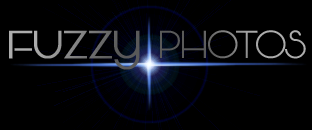| Image Links | |
| Published image | Full resolution |
| Annotated image | Full resolution |
| Target Information | |
| Main Target Designation(s) | ISS Transit of the Moon |
| Exposures | |
| Date(s) of acquisition | 12Sep2019 04:02:40 UTC |
| Location | Defiance, MO |
| GPS | 38°43'22.8"N 90°48'52.4"W |
| ISS Information | |
| Angular Size | 40.06″ |
| Distance | 689.82 km |
| Angular Velocity | 33.5 ′/s |
| Transverse Velocity | 6.72 km/s |
| Radial Velocity | -3.11 km/s |
| Total Velocity | 7.41 km/s |
| Moon Phase | 95.7% |
| Capture resolution | 1936x1216 |
| Luminance (transit) | |
| Video source | 95" at 0.816ms / 47fps |
| Gain | 55% |
| Stack (ISS) | 7 frames, manually aligned on shadow |
| Luminance (surface) | |
| Video source | 120" at 0.816ms / 49fps |
| Gain | 55% |
| Stack | 1781 (30%) of 5937 frames |
| Red (surface) | |
| Video source | 120" at 2.550ms / 53fps |
| Gain | 55% |
| Stack | 1943 (30%) of 6475 frames |
| Green (surface) | |
| Video source | 120" at 3.204ms / 54fps |
| Gain | 55% |
| Stack | 1970 (30%) of 6567 frames |
| Blue (surface) | |
| Video source | 120" at 3.066ms / 50fps |
| Gain | 55% |
| Stack | 1802 (30%) of 6006 frames |
| Equipment | |
| Imager | ZWO ASI174MM |
| Filters | ZWO 1.25" LRGB |
| Telescope/Lens | Celestron C14 XLT SCT |
| Focal Length | 3910mm (f/11) |
| Mount | Celestron CGE Pro |
| Focuser | Moonlite 2.5" CSL |
| Software | |
| Acquisition | FireCapture 2.5 |
| Guiding | None |
| Processing | PIPP v2.5.9, AutoStakkert 3, PixInsight 1.8, Photoshop CC |
To catch an ISS transit across the moon is to spend a lot of time planning where to set up and when to start clicking away with the camera. Though they happen with fair regularly, these lunar transits are typically visible from a path only about 3.5 miles (5.6 km) in width that traces the earth's surface, and from the best vantage point at the center line, the transit itself still lasts less than 1 second. Without a doubt, coming to the photo opportunity prepared is a must!
But as if a normal ISS transit wasn't uniquely difficult enough, the 11th of September this year presented an event that was both extraordinarily lucky and extraordinarily challenging. This transit's path happened to fall right over ASEM's stationary observatory housing our C14 SCT, an excellent opportunity to get better detail than ever on the ISS with this "planetary cannon". However, with great focal length comes great responsibility: With a field of view that covers only a fraction of the moon's surface, pointing the frame at a set of features that have been well analyzed to cover the ISS path requires care and precision!   In doing so, I was able to reveal the shadowed ISS across 7 frames and combined it with a full LRGB stack to present our space-faring friends in better detail than I've ever acquired!
The detail of the ISS is better than I've been able to acquire yet, and all this while it traveled in the shadow of the Earth. Most prominently displayed and with some light detail are the flanking photovoltaic arrays with their supporting truss segments. The Zvezda Service Module can be seen as a vertical shoot at the top of the station, and the large squarish portions at each side of center are the thermal control system radiators, largely hiding us from other detail at center due to the ship's tilted presentation toward the camera.
Once again, catching an ISS transit proved to be a remarkably exciting experience -- predicting the path, 90 minutes of setup and orientation, and several minutes hoping I was pointed at the right spot, all to see it zip across the live frame in tenths of a second!

